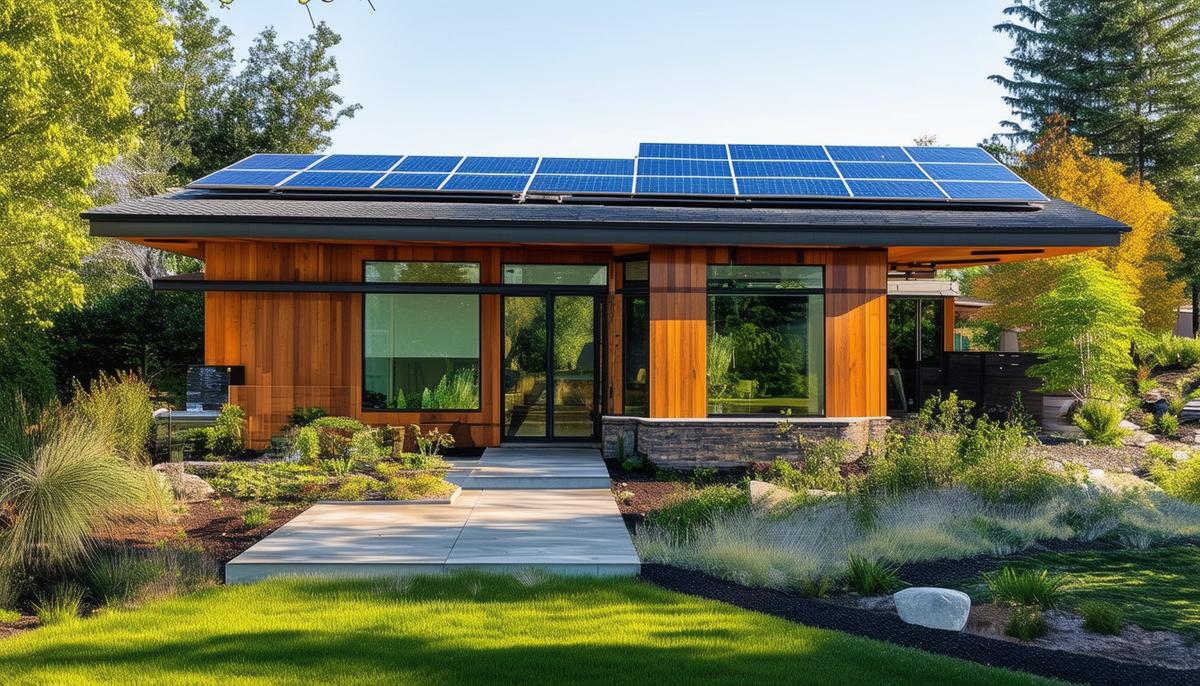Owning a home is an adventure filled with opportunities to make it truly yours. From eco-friendly upgrades to smart technologies, there's always something new to learn and implement. Each choice you make can transform your living space into a more efficient, comfortable, and sustainable haven.
1. Solar Panels & Renewable Energy
Solar panels are stars in sustainable home improvements. They turn your roof into a mini power plant, converting sunlight into energy. While the initial cost may seem high, they're an investment that pays off over time. Many areas offer rebates and tax credits to help offset the upfront expense.
The best part? Solar panels are low maintenance. Once installed, they quietly work their magic, reducing your utility bills. Don't forget to check with local utility companies for additional incentives.
Consider expanding beyond just panels. Solar water heaters can be a great addition if you have the space. For those with larger properties and budgets, wind or geothermal energy systems can further enhance your green setup.
Remember, solar energy is versatile. Adding solar attic fans or outdoor lights can reduce energy consumption from your main supply and complement your overall sustainable approach.

2. Grey Water System
Grey water systems are a clever way to reuse water from your sink, shower, and laundry for garden irrigation. Instead of sending slightly used water down the drain, you can divert it to nourish your landscape. It's an eco-friendly solution that helps reduce water bills and keeps your garden thriving.
How Grey Water Systems Work:
- Capture water from everyday activities (excluding toilets)
- Filter out impurities
- Send filtered water to your plants
You can opt for a basic diversion system or a more complex pumped and filtered setup, depending on your needs and DIY enthusiasm.
Important considerations:
- Check local regulations as rules can vary
- Use biodegradable and plant-friendly soaps and detergents
With a grey water system in place, you'll feel like an eco-wizard, impressing neighbors and giving Mother Nature a high five. It's a practical way to conserve water and nurture your green thumb simultaneously.
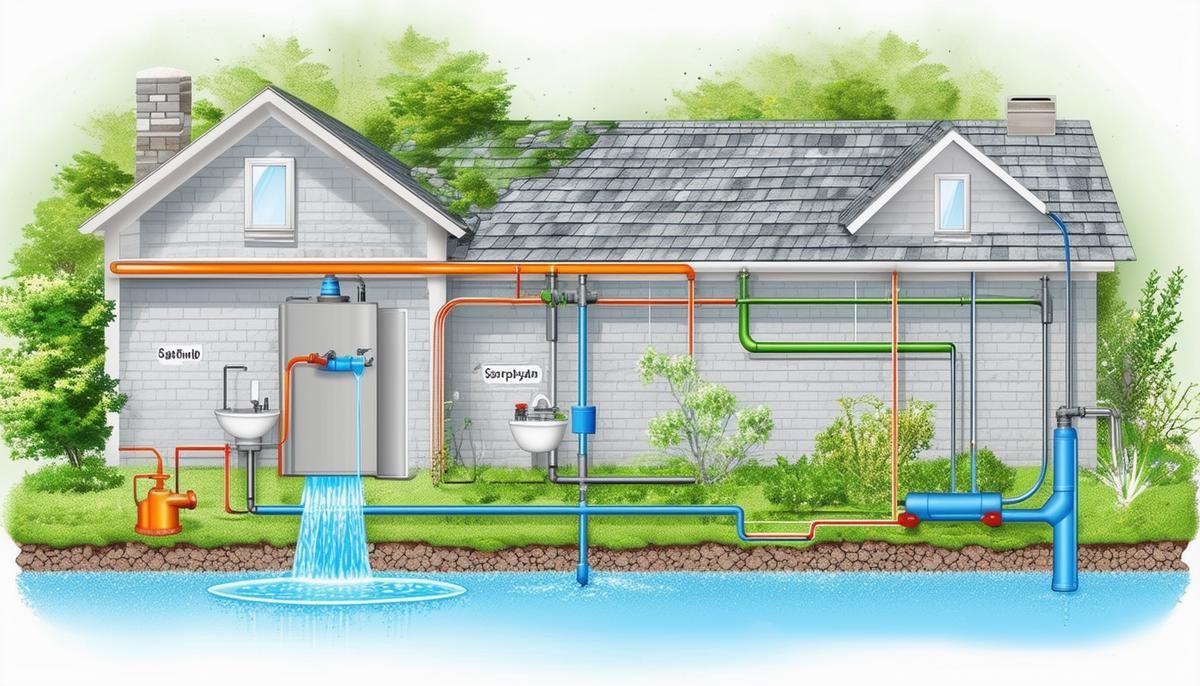
3. Natural Building Materials
Natural building materials offer a sustainable and stylish way to upgrade your home. Let's explore some eco-friendly options:
- Bamboo: This fast-growing grass is versatile and strong, suitable for flooring, countertops, and decking. It's as durable as some hardwoods but grows much faster, making it a renewable resource.
- Recycled materials: Repurposed wood adds character to floors, while recycled glass can create stunning countertops. These options not only look great but also help keep waste out of landfills.
- Recycled plastic decking: Durable and low-maintenance, this option looks fabulous without the need for regular staining or oiling.
- Cork flooring: Renewable, cushiony, and naturally insulating, cork is comfortable underfoot and helps regulate room temperature.
By choosing natural, renewable, and recycled building materials, you're creating a stylish living space while supporting sustainability. Each choice contributes to a greener home and a healthier planet.
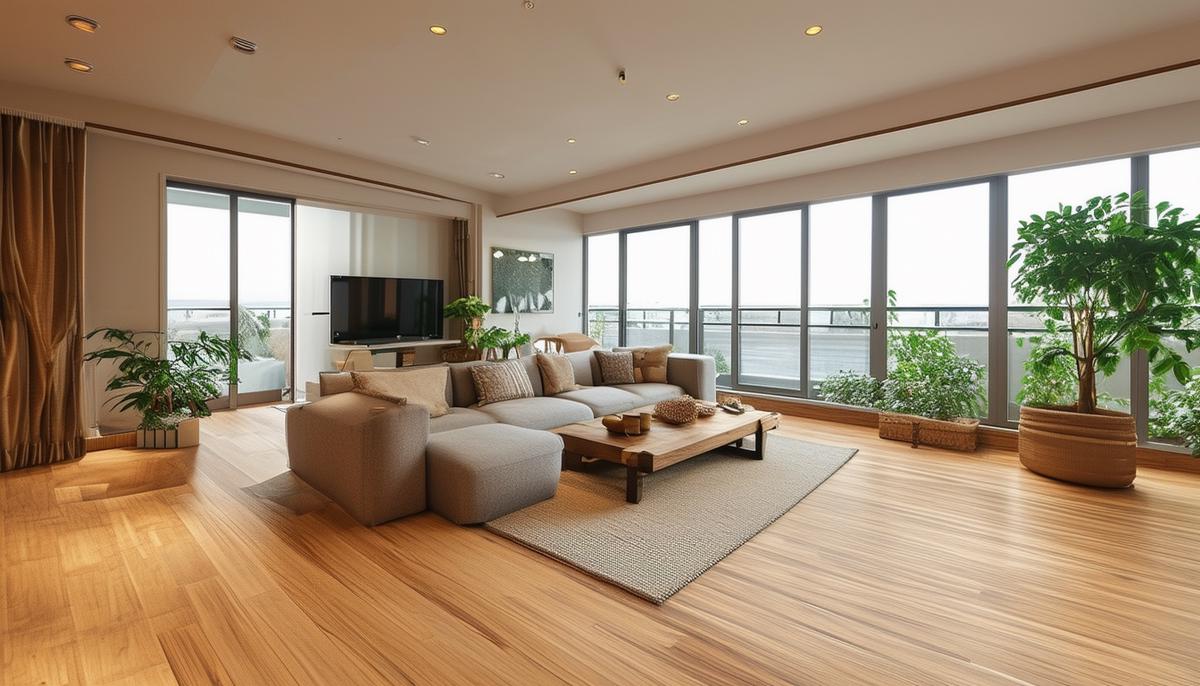
4. Cool Roofs
Cool roofs are a simple yet effective upgrade for energy efficiency. By using light-colored or reflective roofing materials, you can significantly reduce heat absorption and keep your home cooler.
Why choose a cool roof? Dark roofs absorb heat, forcing air conditioning to work harder. Cool roofs reflect more sunlight, reducing heat absorption and lowering energy bills. They also help combat the urban heat island effect, making your neighborhood more comfortable overall.
Cool roof options:
- Reflective shingles or tiles
- Metal roofing
- Cool roof coatings for existing roofs
These materials come in various colors and styles to complement any home aesthetic. If re-roofing isn't an option, cool roof coatings can transform your existing roof with minimal hassle and cost.
"By installing a cool roof, you'll enjoy a more comfortable home, lower energy bills, and the satisfaction of contributing to a cooler, more sustainable community."
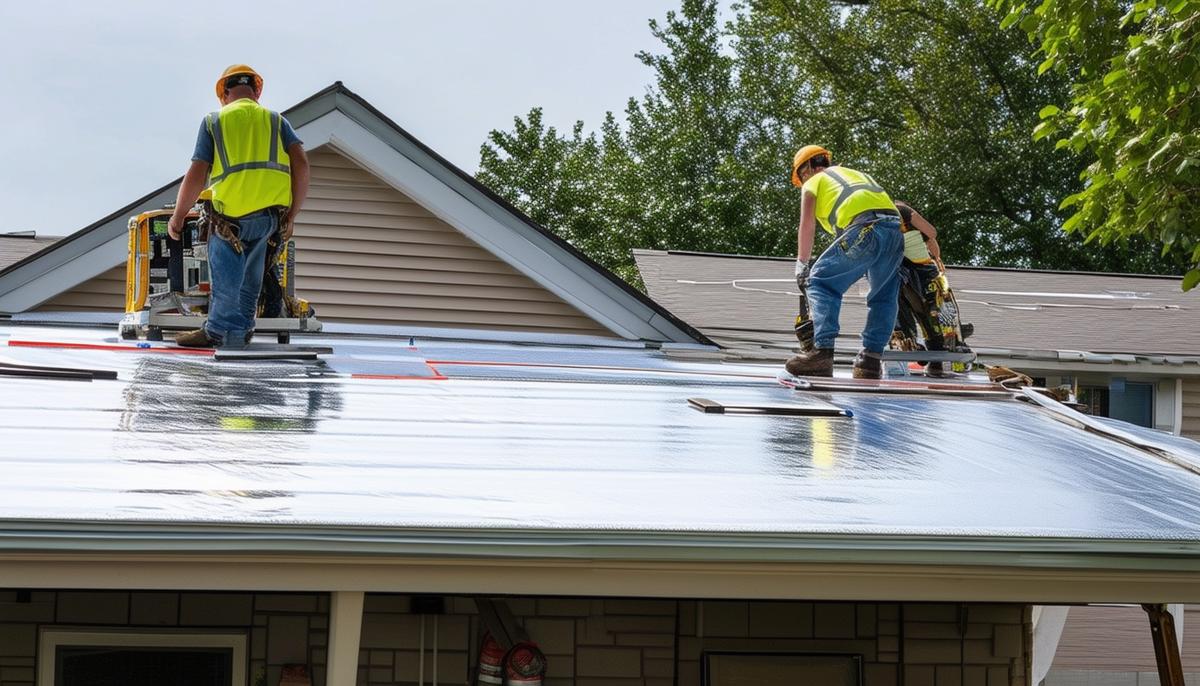
5. Energy Star Appliances
Energy Star-rated appliances are the high achievers of the household. They use significantly less electricity and water, saving you money and conserving resources. Let's look at how these efficient appliances can benefit your home:
| Appliance | Benefits |
|---|---|
| Refrigerators | Less power usage, smart cooling technology, sleek designs |
| Washing machines | Less water and electricity use, gentler on clothes |
| Dishwashers | Effective cleaning with less water and energy |
| TVs and sound systems | Eco-friendly entertainment setups |
| HVAC systems | Comfortable home with minimized energy waste |
| Small appliances | Energy-efficient ceiling fans and light fixtures |
Upgrading to Energy Star appliances often comes with rebates and tax credits, making the switch even more appealing. By choosing these efficient models, you'll reduce your carbon footprint and enjoy lower utility bills. It's a win-win for your wallet and the environment.1

6. Native Landscaping
Native landscaping is a smart way to create a beautiful, low-maintenance garden that's kind to the environment. By planting species native to your area, you're working with nature rather than against it.
These plants are perfectly adapted to local conditions, meaning they need less water, fertilizer, and care. They're like the ultimate low-maintenance garden guests! Native plants are also champions of water conservation, requiring far less H2O than traditional lawns.
But it's not just about saving water. Native landscaping plays a crucial role in supporting local wildlife. Your garden becomes a haven for birds, bees, and butterflies, creating a thriving ecosystem right in your backyard.
For those who'd rather spend weekends relaxing than weeding, native plants are a godsend. They've evolved to outcompete local weeds and thrive in your soil conditions. Their deep root systems also help combat erosion and improve soil health.
Benefits of Native Landscaping:
- Low water requirements
- Minimal need for fertilizers
- Supports local wildlife
- Reduces weeding
- Combats soil erosion
Getting started with native landscaping is easier than you might think. Local nurseries often carry a selection of native plants and can offer advice. Once planted, these hardy species mostly take care of themselves.
To take your green journey even further, consider adding drip irrigation or rain gardens. These additions can optimize water use and make your yard a model of eco-friendly landscaping.
Embracing native landscaping transforms your outdoor space into a lush, low-maintenance Eden that's as kind to the environment as it is to your schedule. It's a smart choice for any homeowner looking to create a beautiful, sustainable landscape.
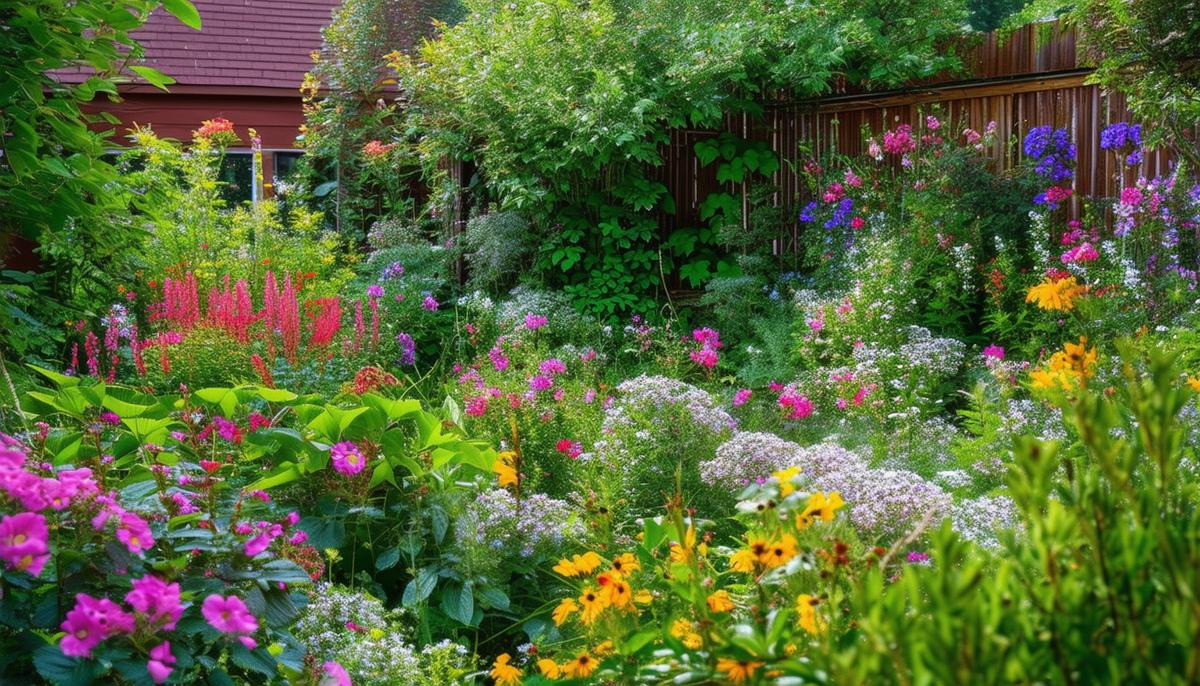
7. Drip Irrigation
Drip irrigation is a game-changer for garden watering. It's like giving your plants a personalized hydration system, delivering water directly to their roots with precision and efficiency.
This clever system uses hoses or tubes with small emitters that slowly release water. Unlike traditional sprinklers that can waste up to 50% of water through evaporation, runoff, and wind drift1, drip irrigation ensures almost every drop reaches your plants.
Benefits of Drip Irrigation:
- Water savings
- Lower utility bills
- Healthier plant growth
- Reduced weed growth
- Automated watering
Installing a drip system might sound daunting, but it's quite manageable, even for DIY beginners. Here's a basic setup:
- Lay main tubing around your garden
- Run smaller lines to each plant
- Add emitters to the lines
- Install a timer for automation
Drip irrigation is flexible and can be adapted to gardens of all shapes and sizes. Whether you have a sprawling vegetable patch or a cozy flower bed, you can customize the setup to suit your needs.
Maintenance is straightforward – just check occasionally to ensure the emitters aren't clogged. Compare that to the hassle of dragging hoses around, and you'll see why drip irrigation is so appealing.
"Drip irrigation can reduce water use by 30 to 70 percent compared to conventional irrigation methods."2
As a bonus, many areas offer rebates for installing water-conserving systems like drip irrigation. It's a win for your garden, your wallet, and the environment.
By embracing drip irrigation, you're creating a more sustainable and efficient garden. It's a smart choice for any homeowner looking to save water while keeping their plants happy and healthy.
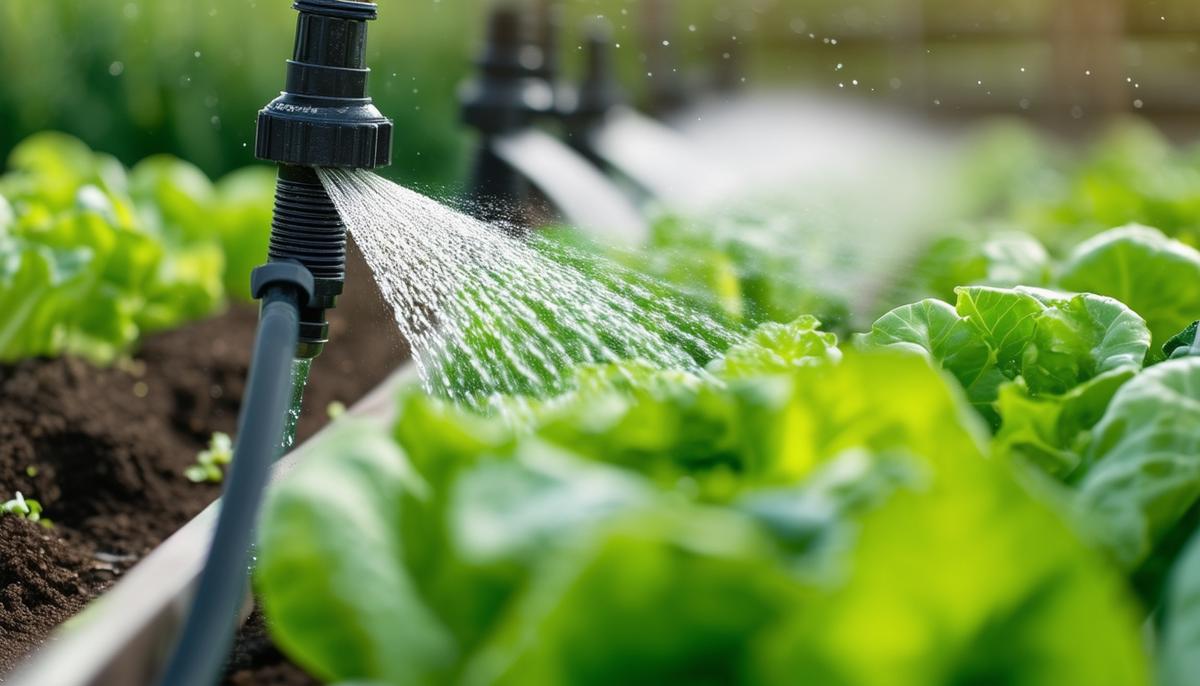
8. Low-Flow Fixtures
Low-flow fixtures are a smart way to save water without sacrificing comfort. These clever devices reduce water flow while maintaining the pressure you're used to, making them a win-win for both your wallet and the environment.
Faucets:
| Type | Water Usage |
|---|---|
| Traditional | 2.2 gallons per minute (gpm) |
| Low-flow | 1.5 gpm |
Low-flow faucets often use aerators, which mix air into the water stream to maintain pressure while using less water.
Showers:
| Type | Water Usage |
|---|---|
| Standard | 2.5 gpm |
| Low-flow | 1.75 – 1.5 gpm |
Modern designs ensure you still get a satisfying shower experience, often incorporating features like pulse settings or misting options.
The benefits extend beyond water conservation. Using less hot water means reduced energy consumption, leading to lower utility bills. It's a double saving that adds up over time.
Installation is typically straightforward, often a simple DIY job. In just a few minutes, you can transform your bathroom into a more eco-friendly space.
Pro tip: Many utility companies and municipalities offer rebates for installing water-efficient fixtures, providing an extra incentive to make the switch.
By choosing low-flow fixtures, you're making a smart choice that benefits both your home and the environment. You'll reduce your water footprint and save on utilities while still enjoying great performance. It's a simple change that can make a big difference in your home's sustainability.
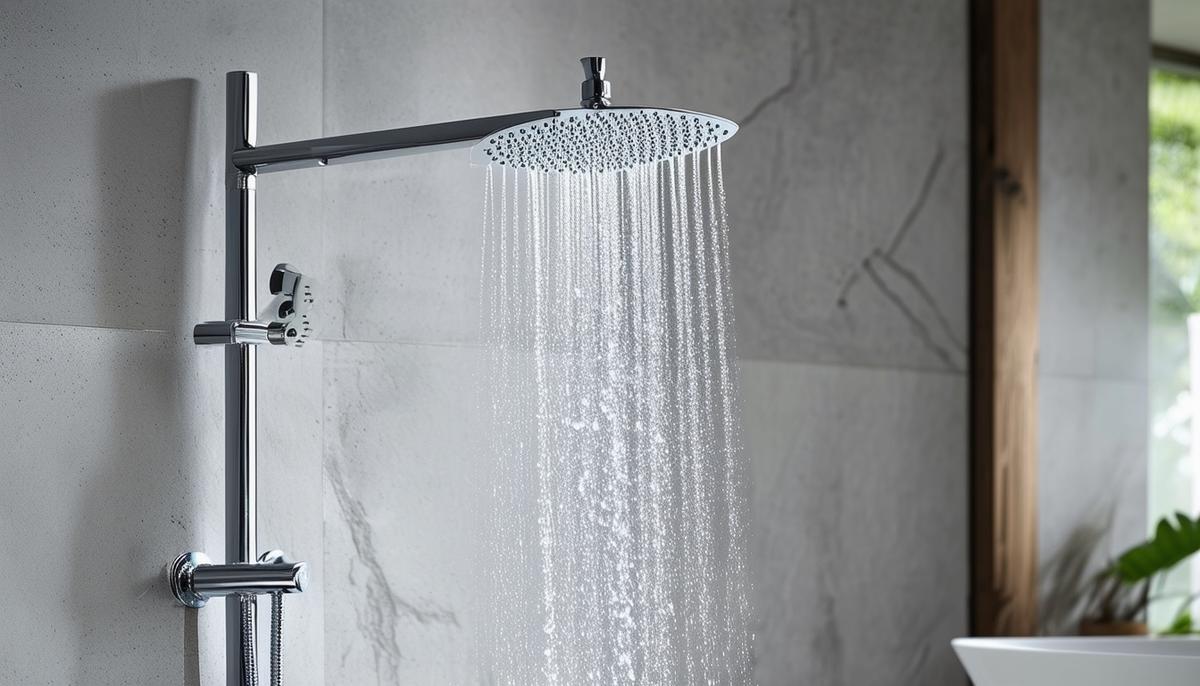
9. Smart Thermostats
Smart thermostats are a game-changer for energy-efficient homes. These devices learn your daily routines and preferences, adjusting temperatures automatically to optimize comfort and savings. They can be controlled remotely, integrate with voice assistants, and provide detailed energy usage reports.
The benefits of smart thermostats include:
- Reduced energy bills: Save up to $180 annually when used correctly, according to the EPA1.
- Lower carbon footprint: Optimize heating and cooling to reduce greenhouse gas emissions.
- Convenience: Adjust settings remotely or via voice commands.
- Insights: Get detailed reports on energy usage and savings.
- Potential rebates: Many utility companies offer incentives for installation.
Installation is typically straightforward, with user-friendly interfaces and instructions. For those less comfortable with DIY, professional installation is an option.
Upgrading to a smart thermostat is a smart choice for homeowners looking to improve comfort, save money, and reduce their environmental impact. It's an investment that pays off in both the short and long term.
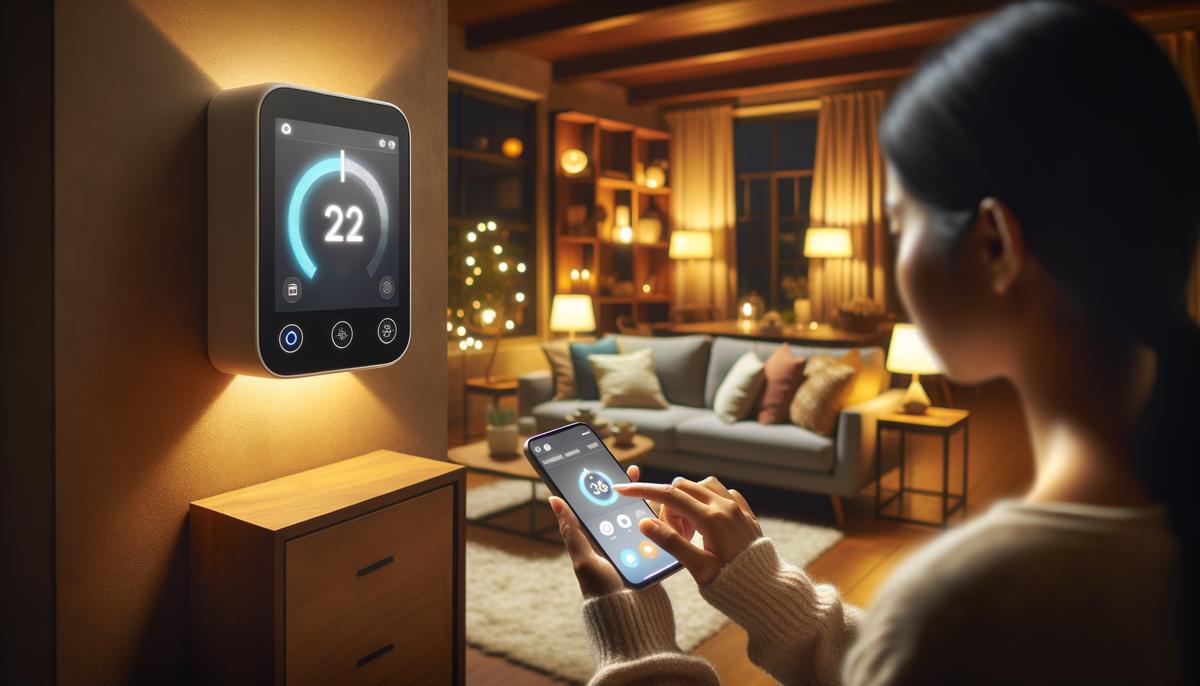
10. Smart Insulation
Smart insulation is crucial for maintaining a comfortable home temperature while reducing energy costs. It's not just about adding more insulation, but strategically sealing air leaks and choosing the right materials for your climate.
Key areas to focus on:
- Air leaks: Seal gaps around windows, doors, and in the attic with weatherstripping and door sweeps.
- Attic insulation: A well-insulated attic can prevent up to 30% of heating and cooling energy loss2.
- Basement: Insulate rim joists to reduce drafts.
- Materials: Consider options like spray foam for superior sealing or eco-friendly cellulose made from recycled paper.
Remember, proper ventilation is essential to prevent moisture buildup. Striking the right balance between insulation and airflow is key to a healthy, efficient home.
Smart home technology can help monitor and manage insulation efficiency, allowing for remote adjustments and peak performance.
"Investing in smart insulation not only improves comfort but also reduces energy bills and your home's carbon footprint. It's a win-win for your wallet and the environment."
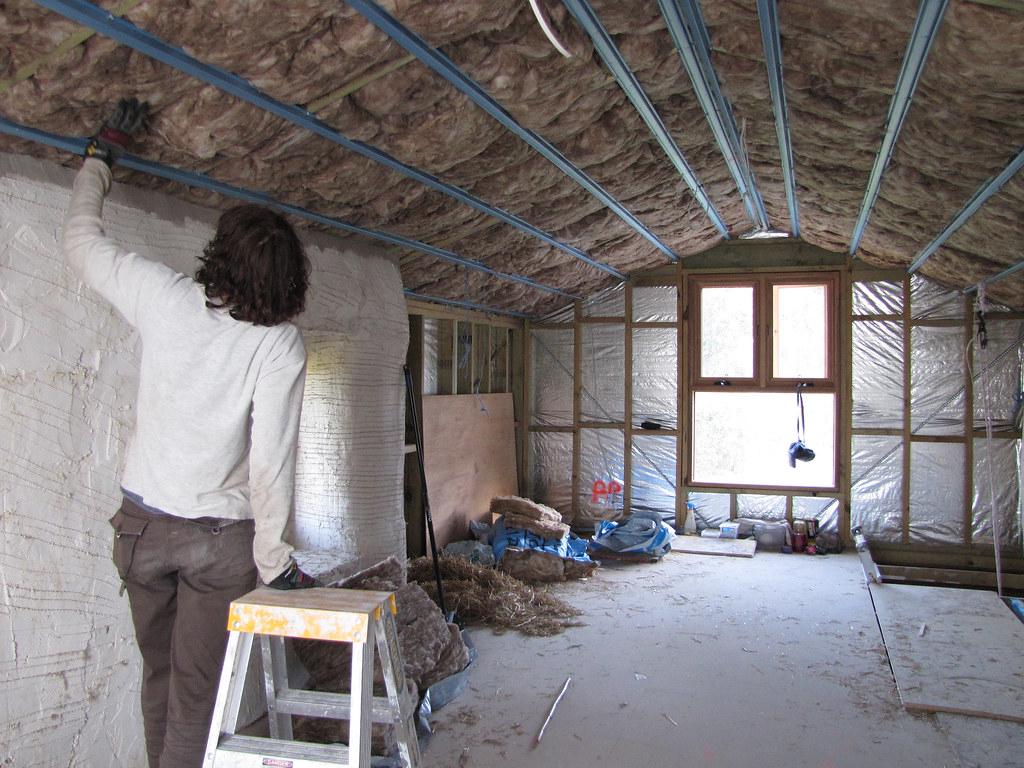
11. Rain Barrels
Rain barrels are an eco-friendly solution for harvesting rainwater, offering both environmental and financial benefits. These simple devices attach to your gutter downspout, capturing water that would otherwise be lost to runoff.
| Benefits of Rain Barrels | Impact |
|---|---|
| Water bill savings | Up to 30% reduction during gardening season |
| Environmental impact | Reduces stormwater runoff and associated pollutants |
| Garden health | Provides chemical-free water for plants |
| Drought resilience | Stored water helps during dry spells |
Installing a rain barrel is typically a straightforward DIY project. Most come ready to assemble with a spigot, overflow outlet, and mosquito-proof screen. For increased capacity, multiple barrels can be connected.
Modern rain barrels come in various designs to complement your home's aesthetics. Some advanced systems even offer filtration options and smart integration for monitoring water levels and usage.
Safety tip: When setting up your rain barrel, ensure it's securely covered and placed on a level, sturdy surface to prevent accidents.
Rain barrels are an excellent choice for homeowners looking to conserve water, save money, and reduce their environmental footprint. It's a simple yet effective way to make a positive impact on both your garden and the planet.
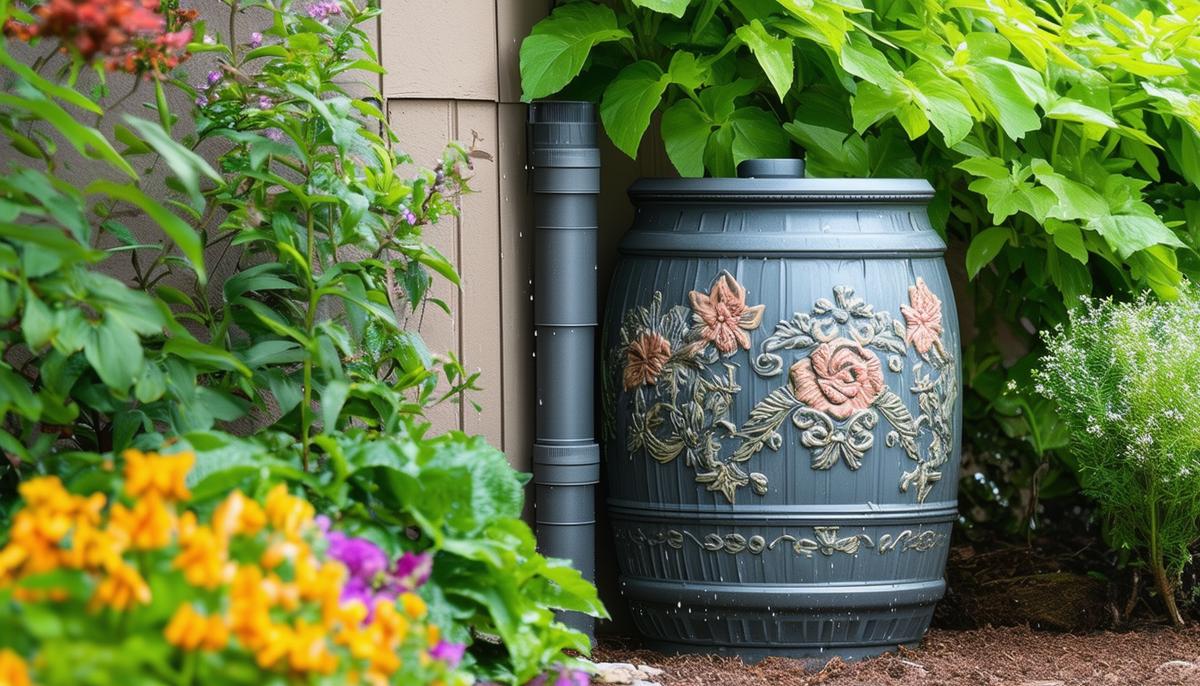
12. No-VOC Paint
No-VOC paint is a breath of fresh air for your home makeover. Traditional paints contain volatile organic compounds (VOCs), which can release harmful pollutants as the paint dries. These chemicals can cause headaches, dizziness, and respiratory issues, with long-term exposure potentially leading to more serious health problems.
No-VOC paints offer a safer alternative, containing little to no volatile organic compounds. This means you can paint without worrying about turning your home into a hazardous zone. These eco-friendly options are perfect for nurseries, bedrooms, and any room where air quality is a priority.
Performance and Application
But do these paints perform as well as traditional ones? Absolutely. No-VOC paints have come a long way, offering vibrant colors, durability, and coverage comparable to conventional paints. Whether you're after a matte finish or a high-gloss look, there's a no-VOC option that'll make your walls pop.
Applying no-VOC paint is straightforward. They're typically water-based, making cleanup easy with just soap and water. They also dry quickly, allowing you to enjoy your freshly painted space sooner.
Environmental Benefits
Choosing no-VOC paint has environmental benefits too. By reducing the release of VOCs, you're helping to combat air pollution both indoors and out. Popular brands offering no-VOC options include:
- Benjamin Moore's Natura
- Behr Premium Plus
- Sherwin-Williams Harmony
In summary, no-VOC paint provides stunning, vibrant walls without sacrificing indoor air quality or environmental responsibility. It's a smart choice for those looking to refresh their space while prioritizing health and sustainability.1
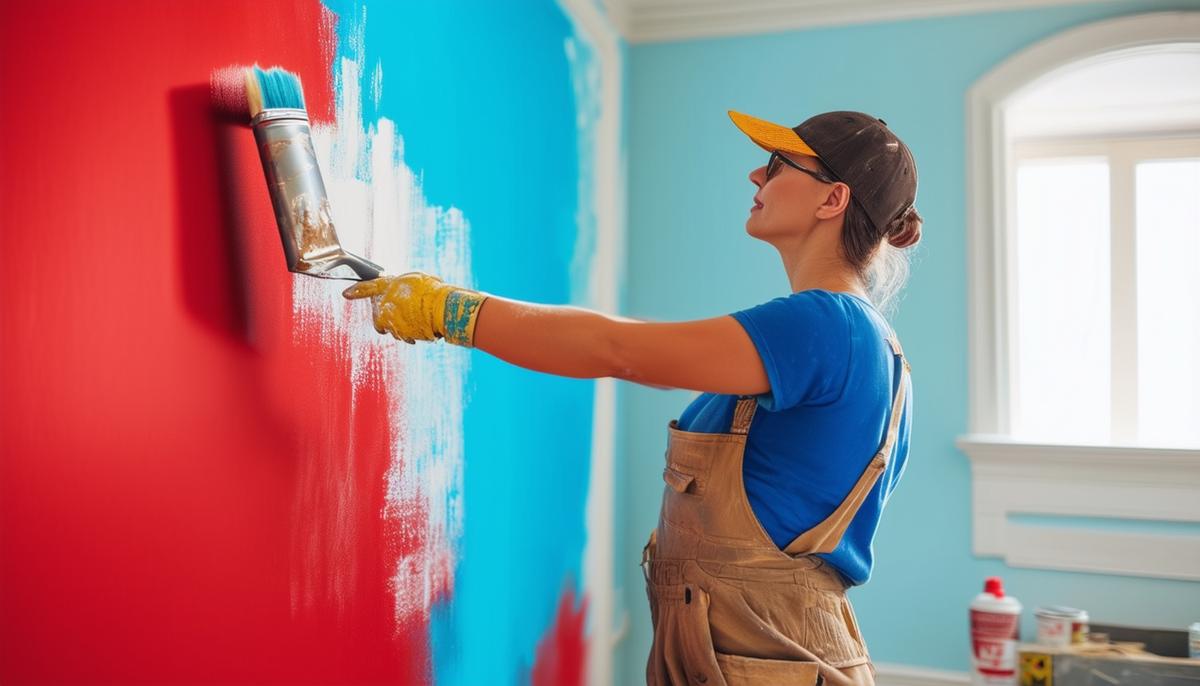
13. LED Lighting
LED lighting is revolutionizing home illumination with its energy efficiency and versatility. Compared to traditional incandescent bulbs, LEDs use up to 90% less energy, translating to significant savings on your electricity bill.
Longevity and Versatility
Longevity is another hallmark of LED bulbs. While an incandescent bulb typically lasts about 1,200 hours, LEDs can shine for up to 50,000 hours – that's nearly two decades of use! This extended lifespan means fewer replacements and less waste.
LED bulbs offer a range of color temperatures to suit different preferences and needs. Whether you prefer warm, cozy lighting or cool, bright illumination, there's an LED option for you. Many are also dimmable, allowing for flexible lighting control.
"For the tech-savvy homeowner, color-changing LED bulbs controlled by smartphone apps add a fun, customizable element to home lighting. These are great for setting moods or creating festive atmospheres during celebrations."
Cost-Effectiveness and Environmental Impact
While LED bulbs may have a higher upfront cost, their energy efficiency and longevity make them a cost-effective choice in the long run. Some utility companies even offer rebates for switching to energy-efficient lighting, further offsetting the initial investment.
LEDs are also environmentally friendly. They're free of toxic elements like mercury (common in CFLs) and are often recyclable at the end of their long life.
By switching to LED lighting, you're not just upgrading your home's ambiance – you're making a smart choice for your wallet and the planet. It's an easy way to reduce your energy consumption while enjoying high-quality, versatile lighting.2

14. Rain Gardens
Rain gardens are a smart and attractive solution for managing stormwater runoff in your yard. These shallow depressions, filled with native plants, capture and filter rainwater from roofs, driveways, and other hard surfaces.
Functionality and Benefits
The beauty of rain gardens lies in their dual functionality. They're not only visually appealing but also serve as natural water management systems. Rain gardens can handle up to 30% more rainfall than a regular lawn, reducing erosion and helping to recharge groundwater supplies.
Native plants are key to a successful rain garden. These species are adapted to local conditions and can thrive in both wet and dry environments. Popular choices include:
- Black-Eyed Susans
- Purple Lovegrass
- Redtwig Dogwood
Beyond their water management role, these plants attract local wildlife, creating a mini-ecosystem in your yard.
Creating Your Own Rain Garden
Creating a rain garden is a manageable DIY project. Follow these steps:
- Identify a low spot in your yard where water naturally collects.
- Dig a shallow basin (6-12 inches deep).
- Amend the soil with compost to improve drainage.
- Size your rain garden to about 10-20% of the surface area you're draining.
- Add a mix of mulch and compost.
- Plant your chosen native species.
Maintenance and Community Impact
Maintenance is relatively simple. Once established, rain gardens require less care than traditional landscaping. Native plants are hardy and adapt well to local conditions, needing less watering and fertilizing. Occasional weeding and pruning are usually sufficient to keep your rain garden thriving.
Rain gardens offer benefits beyond your property line. By managing runoff, they reduce the burden on storm drains and can help mitigate neighborhood flooding risks. Some municipalities even offer incentives for installing rain gardens due to their positive impact on urban stormwater management.
By incorporating a rain garden into your landscape, you're creating an eco-friendly feature that beautifies your yard while contributing to sustainable water management. It's a practical and attractive way to make a positive environmental impact right at home.3
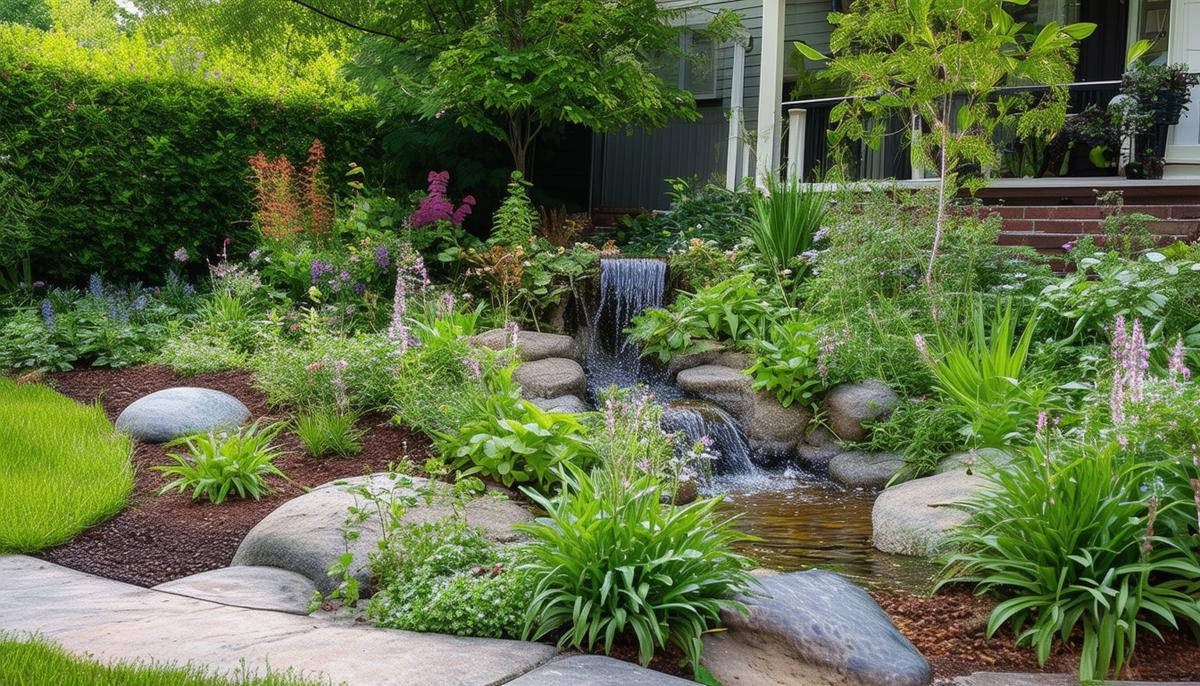
15. Recycled Materials
Recycled Materials: Style with Sustainability
Let's appreciate the unsung heroes of home improvement: recycled and repurposed materials. These gems don't just minimize waste; they also add a unique flair to your home. Sustainability can look pretty chic when done right.
Imagine turning discarded wood pallets into a rustic headboard or using reclaimed barn wood to create an accent wall. This reduces the demand for new materials and keeps those "too cool to be trashed" items from ending up in landfills.
Get Creative with DIY Projects
- Reclaimed wood can become stunning furniture pieces like coffee tables or unique shelving units.
- Transform an old door into a one-of-a-kind dining table by sanding it down and adding legs.
- Recycled glass can be repurposed into beautiful countertops that sparkle under sunlight.
- Use recycled ceramic or glass tiles for a standout backsplash or an artsy bathroom floor.
Pro tip: Scout local flea markets, salvage yards, and online marketplaces for hidden treasures. Antique doorknobs, vintage light fixtures, and reclaimed bricks can all find new purposes in your renovation projects.
Outdoor Spaces and Fabrics
For outdoor spaces, recycled concrete and brick pavers can create attractive patios and walkways. Each piece carries a bit of history, contributing to a rich texture of stories.
Don't forget about upcycling fabrics. Old curtains, linens, or even clothes can be repurposed into throw pillows, quilts, or upholstery. It's a great way to keep memories alive while adding a personal touch to your décor.
By incorporating recycled and repurposed materials, you're being kind to the environment and creating a home filled with character and charm. Your home will not only look fabulous but also carry a story of smart, sustainable choices.

Remember, every step you take to enhance your home improves your quality of life and contributes positively to the environment. Whether it's installing energy-efficient appliances or creating a rain garden, these choices bring lasting benefits for both you and the planet. So go ahead, embrace these changes—your dream home awaits!

